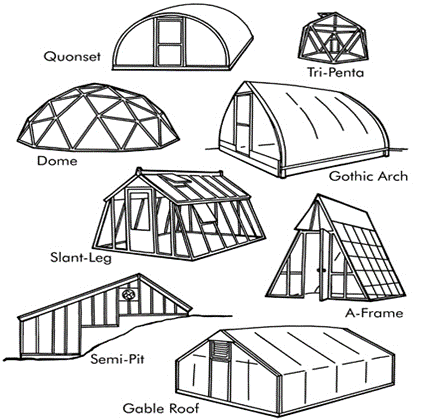Getting My Greenhouse Construction To Work
A Biased View of Greenhouse Construction
Table of ContentsHow Greenhouse Construction can Save You Time, Stress, and Money.7 Easy Facts About Greenhouse Construction ExplainedThe 6-Second Trick For Greenhouse ConstructionWhat Does Greenhouse Construction Do?Not known Factual Statements About Greenhouse Construction What Does Greenhouse Construction Do?

If you stay in a snowy or rainy area, gothic arc greenhouses are a great investment for you because their design permits rain and snow to easily move off the sides which stops damage to the entire greenhouse. Traditional A-Frame greenhouses have high, inclined sides. They are a little bit harder to heat as a result of this.
Barn-Style greenhouses, like their name implies, appear like a barn. They have straight wall surfaces; for that reason, they make great use of room. An even-span greenhouse is a full-size structure that has one end connected to one more structure. The reason that it is called even-span is due to the fact that the sides are both even.
The Facts About Greenhouse Construction Uncovered
When choosing a greenhouse for your yard, it is very important for you to find out the benefits and negative aspects of each greenhouse, to ensure that the greenhouse fits best with your space and way of life. Take a look at our book for more details and photos of each type of greenhouse.
Generally, the following step after selecting a greenhouse is choosing on the structure or base upon which the structure will certainly stand. With your climate and dirt conditions in mind, there are several kinds of greenhouse bases that you can choose from. The primary benefit of setting up a base is cold and thawing the soil, which changes with time and may impact the greenhouse framework (5-7 years).
These legs will hold the greenhouse; nonetheless, it doesn't get to the frost level for many chilly locations, which's where a greenhouse base is something you might consider. Mounting a base is optional, but we suggest doing so to prolong the greenhouse lifespan. Planta Greenhouses's durable galvanized steel (corrosion and dirt immune) makes the version tough and lasting.
8 Easy Facts About Greenhouse Construction Explained
While the greenhouse structure can last for 20+ years, the polycarbonate panels will certainly last for up to 15 years, whereupon you can replace with brand-new ones and install them on the existing structure. Contact our client website link service to discover out how you can buy private polycarbonate panels. Despite which base you're selecting to mount, pin it to the ground to avoid high winds from lifting the entire structure off the ground.

We've prepared them from toughest to the very least tough + pros/cons: A concrete slab base is the most sturdy structure for a greenhouse. It does call for preparation and labour beforehand, once it's full, you look here can neglect about logistics and focus on expanding your food. This base will certainly offer maximum durability to the greenhouse.
The 7-Second Trick For Greenhouse Construction
Rodents will not be able to tunnel inside the concrete base. Standing water may be a problem considering that it can just drain around the sides of the greenhouse base.
A concrete base is one of the most costly choice but the most affordable lengthy term. When all shuttering is put official statement in location to pour the concrete within, it is relatively simple to construct. It is additionally feasible to utilize even more durable repairings, such as expansion bolts, to hold the greenhouse base in position.
The greenhouse is removable, you won't be able to move the base with it. A wooden base is an excellent strong structure to develop your greenhouse on.
The 25-Second Trick For Greenhouse Construction
Pressure-treated timbers have chemicals included in them which can seep into the soil and impact your plants; nevertheless, if you choose naturally rot-resistant timber (i. e. cedar or redwood), it will not happen but will be more expensive. Not as resilient as concrete. In the long-term, timber is a lot more mould-prone unless it is rot-resistant or pressure-treated.
One more option is to build a solid border for the steel base to sit on. The finest means to mount your greenhouse over a perimeter base is to place the frame on the outdoors edge.
Prior to starting, note the steel base's size on the ground utilizing spray paint to guarantee that the leading fits the bottom neatly. It is an excellent choice in scenarios where the ground isn't wholly levelled, and you want to conserve the extra work of levelling everything out in advance. You can adjust the height of your greenhouse based on the base you're going to go with (simplest to do with a wood boundary base) Cost-effective however tough as a wooden base.
The smart Trick of Greenhouse Construction That Nobody is Talking About
If the slabs (or blocks) aren't secured securely (using a cement mixture), the whole framework may break down. We don't suggest laying blocks or pieces on sand alone, as it will wash away eventually and make the base unstable. It's crucial to have the proper measurements as there is no space for error.
If expanding the elevated bed from the ground, make certain you weed out any roots that might conflict with expanding your plants in the long run. The most significant concern with the elevated foundation is that you might need to change the greenhouse door, make an additional personalized one or make an action to obtain in.